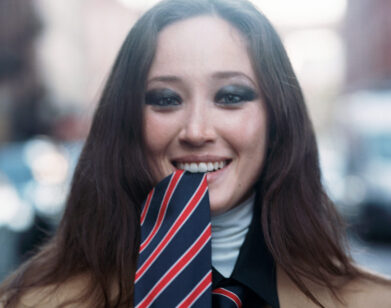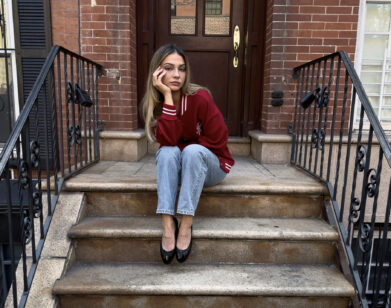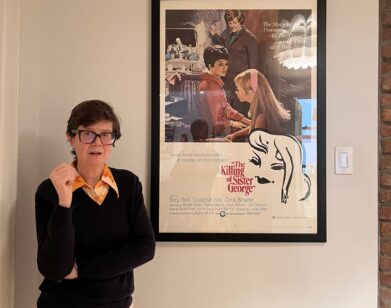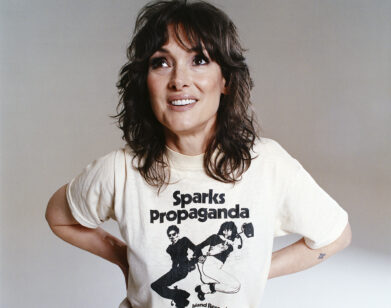Rie of All Trades
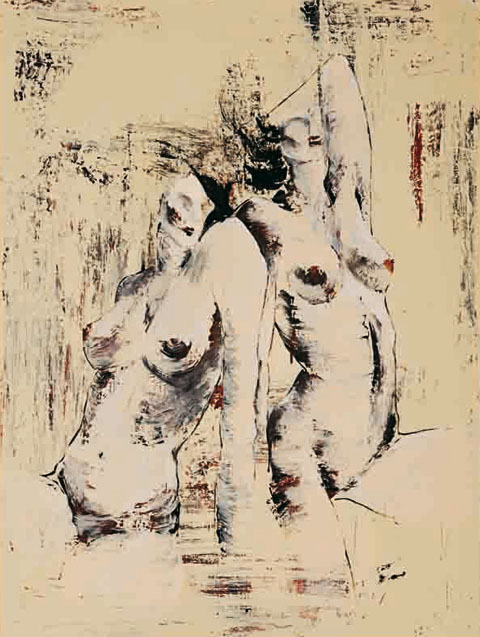
Trailer for Human Zoo
As the protagonist in Luc Besson’s 2005 film Angel-A, Rie Rasmussen played a muse to a pathetically inept scam artist. For Human Zoo, which screened at Cannes, Rasmussen was her own muse, as well as producer, writer, director, editor, and star. The massively multi-talented Danish model/actress/artist/director played the part of a half-Serbian, half-Albanian immigrant living a secret life in Marseilles, haunted by her experiences in the war-torn Balkans. In another medium, the monograph Grafiske Historier by Lilly Dillon (Editions Intervista) Rasmussen chose to credit her artistic career to “Lilly” before the publishers revealed that “Lilly” was the former Gucci, Fendi, and Donna Karan model’s pseudonym. It would have been a shame if Ramussen had succeeded in denying herself credit for the handsome coffee table-worthy book of intimate self-portraits reminiscent of the work of Ellen Von Unwerth, and slinky erotic drawings made from watercolors and coffee, with lines are inspired by Jean Cocteau and Egon Schiele. Here we discuss how art fits with her countless other creative endeavors.
ANA FINEL HONIGMAN: Why publish the book under a fictional character, and then disclose yourself as the author?
RIE RASMUSSEN: I came to America to write and direct but have always been interested in many different ways of telling a story. After doing Femme Fatale I started getting press as an actress, then after Gucci I was being labelled as a model. I realized that it’s easy to get pigeonholed into just one thing. I was shooting photos for French and Italian Vogue at the time and I finally had a script in production so I didn’t want to be stuck with the photographer label or anything but writer-director so I used a name from one of my favorite books, The Grifters by Jim Thompson. After I acted in Luc Besson’s Angel-A, the publisher wanted, understandably, to capitalize on the publicity of the press of the film. They added the sticker on the cover and the big red stamp saying, “Rie Rasmussen is Lilly Dillon.” After the Berlin Film Festival selection of Human Zoo, I feel pretty validated as a writer-director and now I can appreciate the work I’ve done in other mediums much more.
Rasmussen and Jamel Debouzze in Angel-A, 2006
AFH: Do you feel that the pseudonym signifies a different facet of yourself that you’re expressing in your work and this book?
RR: Not specifically, but it’s definitely a blessing to be able to create under different monikers in order to either manipulate or express something that might be misconceived or misinterpreted because of preconceptions or a need to distance yourself from the media’s need to put people in a box. But it’s definitely all Rie. It was just that problem with being labelled and getting put in a box.
AFH: Human Zoo deals with the very serious issues of having one’s identity determined and limited by governments. Was playing with identity in your book’s title your way of demonstrating the comparative luxury that artists have to create their own identity and explore these notions within the safe forum of creative expression?
RR: Yes, it illustrates the freedom we have in the western world to do so without repression; we have the freedom to be whatever we want and choose an alternative lifestyle if it suits us, but it also serves well in oppressed societies where one can speak out under a pseudonym to enlighten and educate and still elude the powers that be. Which depending on who is in power dictates whether you are a good citizen or an enemy. I wrote Human Zoo with the strong theme of identity throughout it, because of the frustration my family was going through trying to adopt my sister Lihn. She was born in Vietnam but because of her mother being sold into prostitution in Moscow she was sent through the human traffic lines until luckily, she ended up in Denmark. The government kept trying to send her back to Vietnam even though she had not lived there since she was a baby and had no family there. Lihn was the perfect immigrant citizen; she learned the language, excelled in school and accepted the customs of her host country. My family finally succeeded and Lihn was given a Danish passport after I finished the film. (LEFT: FROM GRAFISKE HISTORIER, 2006)
AFH: Your mother was an artist. How does your aesthetic or style relate to hers?
RR: She is a realist and generally works in water colors, completely different mediums than me. But it is obvious when you see both of us draw females, that our line is in the same DNA.
AFH: You’re often referred to as a “supermodel.” That term is wildly overused. What relevance does it have for you?
RR: After the cameo in the Brian DePalma film I was offered the Gucci contract. I never did the job of a model. I wouldn’t do doubles or jobs just for money. If I wouldn’t wear the clothes personally or didn’t have some connection with the photographer I would decline, but I was very lucky to be given access to the upper echelons of the fashion industry nonetheless.
AFH: Do you feel that your sense of beauty or the powerful eroticism in your work was directly influenced by your time as a model?
RR: I have always been inspired by the human body and I was around the most beautiful women in the world. I just write, paint and shoot what I see. If the result is as you say, powerfully erotic, it was because of the intimate moments I documented in various forms including paint, ink, and photography. I have an exhibition at the Bailley Gallery in Paris in September, and it will also have the video art pieces of those erotic escapades included.
AFH: What was your thinking behind your self-portraits?
RR: I have always been interested in making a film but when you don’t have the money to make a 35mm motion picture, you tell stories any way you can. Photography for me is a story told one frame at a time and a lot of the time I was the only person around to play the character in my stories and videos so I put myself in the frame, which after years of practice made it seamless for me to direct myself.
AFH: Are your photographic self-portraits images you wish photographers would have taken of you, rather than employing you as a model to embody their own vision?
RR: I can honestly say that every collaboration I had as a photographer’s muse was an amazing and interesting experience, whether positive or negative, and I hope to carry on in that vein. Most photo shoots are a planned production, but the images I produce are very spontaneous in comparison. I usually have a still and a video camera with me at all times and if I see something interesting I shoot it on the spot. I’ve been able to surround myself with interesting people, where interesting things are bound to happen and I’m there to capture it. It’s life on high with a little bit of fiction: a hyper-reality.
AFH: What is the cause or target of the bad-ass aggressive tone in the text and many of the images?
RR: The tone is definitely tongue in cheek and the aggressive quotes are said with a smile. Going back to the labels and the boxes people like to put you in, as a female working in a lot of different mediums, I have met with much opposition from people who talk but don’t do. There are assholes everywhere. It’s funny and sad at the same time.
AFH: What does being an artist mean to you?
RR: Like the back cover of Grafisk Historier says: “I am not an artist. This is my life.”


